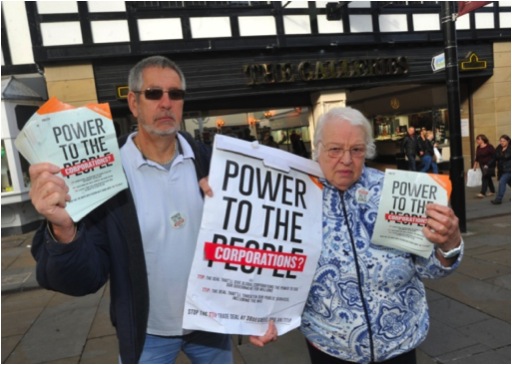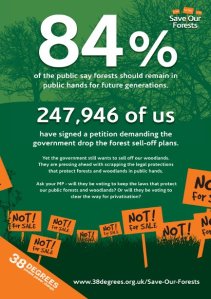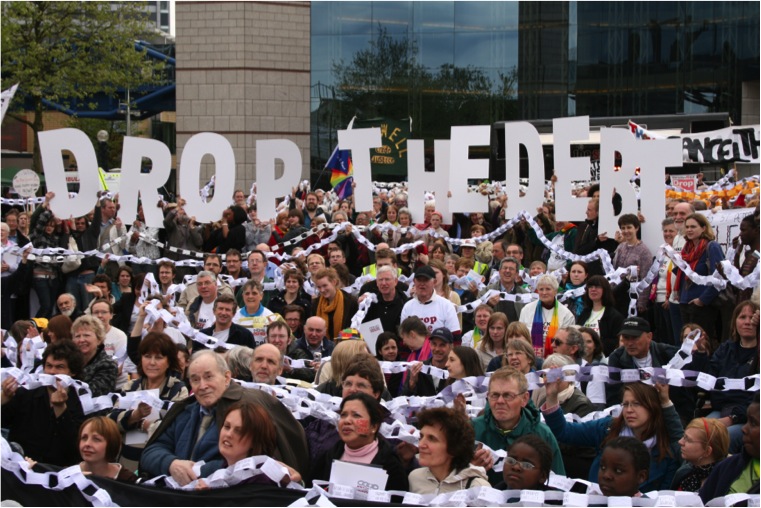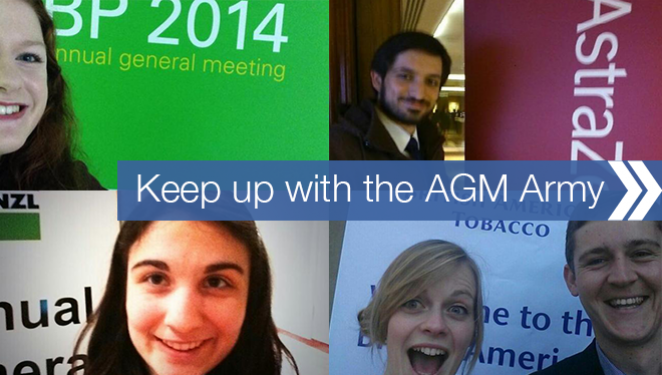In my role as Head of Campaigns and Engagement at Bond, I was ask to write about the trends that will impact the campaigning of members over the next 5 years, and what it means for our work to support members to campaign brilliantly. I came up with the following;
1 – Speed
The first campaign I was involved in was Jubilee 2000. I remember the record breaking petition, the sense of excitement as the latest Christian Aid News would come through the letterbox with an update, and the delighted when we heard we had succeeded in getting the G8 to cancel the unpayable debt.
It took the Jubilee 2000 campaign over 2 years to collect the 22 million signatures that formed the record breaking petition handed to G8 leaders. Anyone who collected those signatures will talk of the hours spent collecting petitions in churches, at street stalls and in student unions bars across the UK, winning the signatures one conversation at a time.
Fast forward to today, where it’s possible for a partnership between Guardian and Change.org to generate 250,000 signatures on FGM in 20 days, and many Bond members are able to generate tens of thousands of emails in a matter of days or weeks. Campaigning organisations able to launch a campaign in a matter of moments in respond to the latest event or news headline.
But while campaigning is getting faster, we’re also seeing a rise in slow activism? Organisations like the One Campaign and Tearfund are encouraging supporters to write handwritten letters to MPs around the recent legislation on 0.7% or All We Can encouraging supporters to stitch mini-protest banners ahead of London Fashion Week, part of creative ‘craftavist’ movement, which encourages reflective action that seeks to change the participant as much as it does the world. I think we need both within our movement, and a willingness to learn from both approaches.
2 – Sophistication
We know more about our supporters than we ever have, what actions the like to take, what topics they’re interested in, if and when they’ll open their emails from us, and as a result we can target our campaigns in more and more sophisticated ways. A recent report suggested “neuro-campaigning” following politics and advertising to use a better understanding of how our own brains work to persuade people to take action. With all this evidence, as campaigners we need to continue to invest more and more in testing of our messages and tactics before we share them.
A focus on what tactics to use, shouldn’t mean we overlook the importance of theories of change at the heart of our campaigning, including challenge ourselves to ask if we’re too focused on targeting our campaigning towards MPs, Government Ministers and UN bodies, or if we should follow Action Aid focusing on local councillors, or corporate divestment championed by Share Action and 350.org, or local media like RESULTS.

3 – Structures
As much as we need to build campaigning structures that are fit for a digital era, we shouldn’t overlook the importance of investing in an active and vibrant grassroots network. For me it’s always been the hallmark of our movement, the local activists that collect names on petitions and meet with their MPs.
I want to learn from groups like 38 Degrees, about how they mobilised 10,000+ volunteers as part of the Days of Action on TTIP, or Toys will be Toys, an entirely volunteer led campaign about how they’re successfully joining up offline and online actions.
A focus on structures should not only be about how campaigns are organised, but also about challenging the very structures that perpetuate inequality and poverty. While we should take advantage of opportunities like the recent Private Members Bill on 0.7%, but the danger in focusing on ‘the little big thing’ is that we risk not building public understanding about the root causes of poverty that should be central to our campaigning.
4 – Space
The Lobbying Act or comments by the former Charities Minister that we should ‘stick to knitting’ reinforce to me that we’re seeing a narrowing of the political space campaigning organisations have to advocate. I believe we should feel proud as a sector of the positive impact our campaigning has had on the lives of the communities we work with. We should all fight to protect it.
Before starting at Bond, I helped to found Campaign Bootcamp, a training programme for those looking to start a career in campaigning. We were overwhelmed by the generosity and enthusiasm we found to help us. That experience has shown me the strength of the community we have, committed to work together to share and help each other.
This is an edited version of an article first published in The Networker available here.
Tag: 38 degrees
Winning in 2014 – 7 great campaigns from the last year
Owen Jones is spot on, 2014 is the year that grassroots campaigns like E15 Mums have taken on the powerful and won, but here are a few of the other campaigns that have impressed me in last 12 months.
1 – AGM Army – Share Action – this small team are building an army of shareholder activists who are become the scourge of corporates, with their AGM Army turning up at annual meetings across the year, calling on Tesco to commit to a Living Wage to asking Greggs about animal welfare, I love how they’re taking a campaigning approach that has existed for year, and with digital tools and good old fashioned training helping to show that the simple act of owning a share gives huge influence. This article is a great summary of what they’re doing.
2 – Towns Against Tax Dodging – Action Aid – I’ve had a long-held admiration from the innovative and creative approach that the team at Action Aid take, from tax to biofuels, I get excited when their latest mailing arrives on my doormat, I love their smart campaigning thinking about new targets and approaches, rather than simply focusing on the traditional trinity of MPs, Whitehall and the UN. The recently launched Towns Against Tax Dodging is a brilliant way example of this.

3 – Rainbow Laces – Stonewall – Off the back of a huge victory on Gay Marriage last year, you might have expected them to take some time to reflect on what’s next (although if you know any of the team you’d have known that was unlikely to be the case, instead they come back with innovative new campaigning , like Rainbow Laces, focusing on kicking homophobia out of football, partnering with Paddy Power to send laces to every Premiership team. The ability to bring the voices of well known brands into their campaigning is seriously impressive.
4 – Unmute – Which – I’m continually impressed by the tone and approach of the campaigns from an organisation focused on being a consumer champion. They mix it up with a range of approaches, for example with the Unmute campaign which mobilised 50,000 to unlock a exclusive track from George The Poet, unlike many organisation that has been campaigning for years, they seem to have been able to adapt their approach to mirror the membership and consultation approach that has been pioneered by digital platforms.

5 – People’s Climate March – 350.org – one of the organisations behind the People’s Climate Marches in September which seem to have reenergised the climate movement. I’ve been a long time fan of the approach which seeks to blend the best of community organising and digital activism across so many countries.
6 – Stop TTIP – 38 Degrees – perhaps a predictable choice, but I’ve been seriously inspired by the way that they’re building an organisational model that takes the best of their digital platform and allows them to mobilises offline as well as quickly online. Getting 10,000 people out in September to campaign on TTIP is just the latest example of this approach, it’s easy to be critical of ‘clicktivism’ but they’re showing that the approach can be used to do so much more.
7 – Space for Cycling – London Cycling Campaign – who used local elections in London back in May to target candidates with ultra-local campaign asks sourced from their supporters for each of London’s 629 election wards, an impressive achievement combined with a brilliant website, helping to ensure their asks got traction with candidates across the capital.
Can 38 Degrees translate online ‘clicktivism’ success into off-line activism?
 Some time last year, a friend forwarded me the following request from the campaign organisation, 38 Degrees;
Some time last year, a friend forwarded me the following request from the campaign organisation, 38 Degrees;
We’ve decided it’s time to take this campaign offline, organising a series of meet-ups between members in and around they live. We’re looking for an experienced organiser to help us deliver on that part of the campaign over the next couple of months.
Without a doubt, 38 Degrees have been one of the campaigning successes of recent years, and in recent weeks they’ve been celebrating a ‘coming of age’ as they forced the government into an embarrassing U-turn on its plan to sell of England’s forests.
The movement has grown quickly and now counts over 500,000 members (who together have taken over 2.4m actions) and to the outsider it appears to have been able to be respond to the issues of the day quickly, while engaging its members.
But look beyond Save our Forests and you can see another interesting development. 38 degrees is going off-line, as it looks to build on the momentum it’s developed on-line to facilitate conversations and campaigning amongst its members through meet-ups around the NHS.
Like many, I’m going to be watching to see how 38 Degrees get on with interest. Given the meteoric rise that the campaign has experienced in the last year, I have a feeling that if anyone is going to pull it off then it’ll be them. The campaign has a great group of experts advising them, energy and in the new government to act as a common enemy for many. But here are 4 challenges that I think they might encounter as they make the leap from on-line to off-line.
1 – Can they keep the conversation going?
The language of the request seems to embrace the spirit that 38 Degrees is set up in. This isn’t about the top of the organisation decided to do something, more a genuine attempt at a more participatory approach to campaigning on a massive scale. I’ve been impressed with the way that 38 Degrees have gone about building the movement, regular e-mails asking me about my priorities and the push for ‘member get member’ recruitment to generate support for their actions.
It’s a refreshing change to see an organisation reject the more institutionalised approach that many campaign organisations adopt, but not lose its effectiveness in the process. The challenge will be to keep the conversation going, manage the tensions that are more likely to occur in the ‘messy’ reality that often exists when you throw together a group of people, while retaining the desire to continue to have impact.
2- Will it just be the usual suspects meeting in a different place?
I’d be fascinated to compare the membership of 38 Degrees to other more established campaigning outfits, like Friends of the Earth, World Development Movement, or even political parties. Have they managed to reach out and mobilise a new generation or group of activists? Or is it simply the same set of individuals who’ve already signed up to take action with the more traditional campaigning organisations just adding another outlet to their activism.
Equally, given the variety of actions toward progressive causes that 38 Degrees offer do they find tribes forming around different themes, with members only taking action on the issues that they’re interested in. Will they be able to unite them around the NHS campaign when they meet to face-to-face, or will this exclude some?
3 – Will it be as empowering?
Books have written about the success of the Obama election machine and its ability to put those who’d signed on-line to work off-line, but they came together for a reason, to get their candidate into the White House. The project was time-bound, had a clear aim and an existing structure (in the Democratic Party) to build upon.
38 Degrees have clearly built community on-line but will this come together off-line? Are the ties and identity that 38 Degrees members have strong enough to entice people with the prospect of sitting in a cold community hall to plan activities and will they be able to come up with an urgency to their actions?
4 – Can anything overcome the trend towards ‘cheque book’ activism?
The attraction of taking action with 38 Degrees is that it’s quick and easy, in a moment I can register my protest and make my views known without leaving my computer, hence the 2.4 million actions that have been taken. It’s a trend that most campaigning organisation is experiencing with the public effectively sub-contracting their activism to an organisation they trust.
This is one of the biggest changes the UK civil society has witnessed in the last decade and a trend repeated amongst the Trade Union movement and Political parties, which have also seen declining membership and engagement. Can 38 Degrees go against the flow and overcome it? I hope so, but I think they might have their work cut out.
#SaveOurForest – a campaign reader

Put a note against Thursday 17th February in your diary, as it marks an important moment for campaigning in the UK. The coming of age of 38 degrees.
Today, the online campaigning movement celebrated as it notched up its most high-profile victory yet, the government make a U-turn and abandons its plan to sell of the forests (watch the announcement to Parliament here).
Lots has already been written about the campaign, and I don’t think I can add much at present, here is a reader of some of the top articles which explore how the campaign unfolded and the impact it’s had.
1. The Guardian explores the important role that social media played in the campaign in Forest sell-off: Social media celebrates victory
2. Johnny Chatterton, from 38 degrees writes for Left Foot Forward about the size of the campaign, with his boss, David Babbs, Executive Director saying ‘Forest sell-off U-turn is a victory for people power‘
3. Chris Rose wrote last week about how ‘Clicktivism By-passes Inside Track To Harry Potter Forest‘ and also the roots that this campaign had in previous battles for forests around the country.
4. Jonathan Porritt criticised the larger environmental NGOs by not supporting the campaign of ‘collective betrayal‘ on his blog, while this blog argued that the campaign had highlighted some of the challenges large NGOs faced in responding to an issue with the agility an organisation like 38 degrees can.
5. The Sunday Telegraph ran many articles, demonstrating the broad support the campaign had ‘Save our forests, say celebrities and leading figure’ something that was clearly important in the victory.
6. But not everyone has been so kind, with Anthony Barnett at Open Democracy, suggesting that 38 degrees shouldn’t take all the credit for the campaign victory, following up on an earlier post challenging them not to compete but campaign with others.
7. But the last word picture should go to cartoonist Steve Bell in today’s Guardian.
What other articles have you read that help to explain the story behind the campaign? Why did this campaign work when so many others haven’t?
When a NGO admits it’s wrong. WWF and it’s (non) involvement in the Save Our Forests campaign
 It’s not often you see a big NGO come out in public and admit that they got something wrong.
It’s not often you see a big NGO come out in public and admit that they got something wrong.
So it’s great to see WWF put out a statement today effectively apologising for its lack of public action and clarifying its stance on UK forest sell-off in response to some harsh criticism it’s received in the press this week.
It’s a spat that started in the Guardian on Monday when environmentalist Jonathan Porritt accused major charities, including WWF, RSPB and the National Trust of “collectively betrayed” for their failure to support the grassroots campaign that has grown in the recent weeks to halt the sale of English forests, while Polly Toynbee put the boot in on Tuesday accusing green groups of ‘keeping their heads down over selling off forests’.
Today, WWF have responded with an excellent statement on their website confessing that they should have done more from the start.
Porrit stated “There have been no statements, no mobilisation of its massive membership, no recognition that this is an absolutely critical issue for the future wellbeing of conservation in the UK. Nothing”.
Suggesting that the lack of action had “made themselves look foolish and irrelevant as one of the largest grassroots protests this country has seen for a long time grows and grows without them – indeed, despite them.”
There is no doubt that the campaign mounted by 38 degrees and others has gathered a huge amount of momentum in a short time, it’s petition has just gone over the half a million mark.
Perhaps most interestingly, it feels like it’s not only the ‘usual suspects’ who are signing on. A non-campaigning friend of mine posted the link to the petition on Facebook tonight encouraging people to sign, and the Observer reported of the opposition of many land owners last weekend.
So I’m impressed to see the response from WWF today, who write of the statement that ‘It’s fair to say this is a bit overdue as loads of you have asked us what we’re doing about the proposed government sell-off (or long-term leasing) of UK forests’
Going on to explain ‘Not having much of a history working on UK forests, we did most of our work behind the scenes and focused our public firepower on issues like illegal logging via our ‘What Wood You Choose?’ campaign. We are working with peers getting an amendment tabled in the House of Lords and had questions asked in parliament, but to be honest we did precious little in public’ (emphasis mine)
In time it might be right to ask if criticising environmental NGOs in such a public way was the right approach by Porritt? As an unnamed source in the original article says ‘Rule one of clever campaigning is that you don’t criticise members of your team, at least not in public’ and WWF say they’ve been working on this behind the scenes.
But for me this spat has once again highlights some of the challenges that the more ‘traditional’ NGOs need to address in their campaigning.
1. Agility
Movements like 38 degrees are so well placed, because they can respond within hours not days. They lack the restrictions of charitable status and often no desire for a seat at the table in ongoing consultation. Combine this with a phenomenal e-mail network mean that they can be ‘first to market’. The challenge that many ‘traditional’ NGOs face is that they’re not set up to turn around a response in the time that online campaigns like 38 degrees.
No doubt heated discussions have been happening at all the NGOs that Porritt choose to criticise (as you can see implied by the response from WWF), but the very nature of these organisations mean that multiple departments need to be involved and opportunities and risks needs to be carefully calculated, but that whole process takes time, and internal compromises often have to be negotiated. In this digital age waiting even 24 hours to respond or act can be too long.
2 – Collaboration
Within a day or so 38 degrees had already collected the first 50,000+ names on its petition, and then you have to ask how much value there is in starting a second competing petition. This for me is the second challenge are traditional NGO prepared to ‘brand’ and ‘profile’ aside and collaborate for the common good when situations like this arise?
Would the NGOs named be prepared to promote the 38 degrees petition assuming they agreed with the essence of what it was calling for?
On this regard I’ve got a huge amount of respect for WWF for saying in their statement ‘To their great credit, 38 Degrees organised a massive public response (sign here if you haven’t already)’ but no doubt that line will cause some anxiety in the organisation as supporters are encouraged to share their valuable data with others.
Collaboration is essential, and to do it well campaigners need to recognise the different roles and approaches needed for effective campaigns.
Save our Forests is no different, surely it’d be of huge value to have organisations with both years of experience in nature conservation joining the campaign and impressive contacts within Parliament to be involved. But to do that requires someone to initiate the collaboration, and in situations like this perhaps it’s not clear who that should be.
3. Accountability
Perhaps it wasn’t Porritt’s criticism and the Guardian articles that lead WWF to clarify their position. The statement from WWF certainly indicates that they’ve also been hearing complaints from supporters saying ‘The scale of passion around this issue has led to a lot of emails as to WWF’s role’.
This case seems to be another example of the increasingly complex relationship that organisations have with their supporters. The tools of collaboration and campaigning aren’t just in the hands of a few professionalised campaigners, they’re available to supporters to lobby the organisations they belong to. It also shows that many campaigners are active in more than one campaigning network.
So congratulation on an excellent response from WWF, a response that already seems to be yielding appreciation from supporters with one writing;
Thank you. As a WWF member and supporter of the Save Our Forests campaign, I’m very glad you’ve joined the campaign. The statement above is everything we could have hoped for.
Now I’m left wondering if we’ll see the National Trust and RSPB come out with a statement in recent days.

